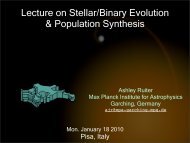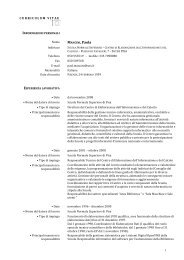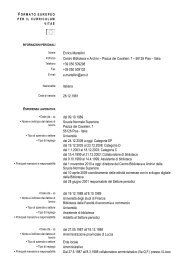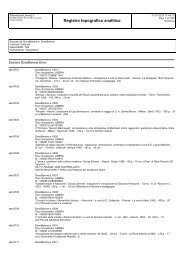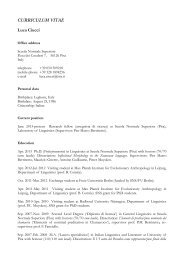Metrics of curves in shape optimization and analysis - Andrea Carlo ...
Metrics of curves in shape optimization and analysis - Andrea Carlo ...
Metrics of curves in shape optimization and analysis - Andrea Carlo ...
Create successful ePaper yourself
Turn your PDF publications into a flip-book with our unique Google optimized e-Paper software.
(a) (b) (c) (d) (e)Figure 3: Segmentation <strong>of</strong> occluded plane <strong>shape</strong>.(From Tsai et al. [60] c○ 2001 IEEE. Reproduced with permission).2.2 Shape <strong>optimization</strong> & active contours2.2.1 A short history <strong>of</strong> active contoursIn the late 20th century, the most common approach to image segmentationwas a comb<strong>in</strong>ation <strong>of</strong> edge detection <strong>and</strong> contour cont<strong>in</strong>uation. With edgedetection [5], small edge elements would be identified by a local <strong>analysis</strong> <strong>of</strong>the image; then a cont<strong>in</strong>uation method would be employed to reconstructfull contours. The methods were suffer<strong>in</strong>g from two drawbacks, edge detectionbe<strong>in</strong>g too sensitive to noise <strong>and</strong> to photometric features (such as, sharp shadows,reflections) that were not related to the physical structure <strong>of</strong> the image; <strong>and</strong>cont<strong>in</strong>uation was <strong>in</strong> essence a NP-complete algorithm.Active contours were <strong>in</strong>troduced by Kass et al. [26] as a simpler approachto the segmentation problem. The idea is to m<strong>in</strong>imize an energy F (c) (wherethe variable c is a contour i.e. a curve), that conta<strong>in</strong>s an edge-based attractionterm <strong>and</strong> a smoothness term, which becomes large when the curve is irregular.To search for the m<strong>in</strong>imum <strong>of</strong> F (c), a curve evolution method was derived fromthe calculus <strong>of</strong> variations. The evolv<strong>in</strong>g curve would then be attracted to thefeatures <strong>of</strong> <strong>in</strong>terest, while manta<strong>in</strong><strong>in</strong>g the property <strong>of</strong> be<strong>in</strong>g a closed smoothcontour.An unjustified feature <strong>of</strong> the model <strong>of</strong> [26] is that the evolution is dependenton the way the contour is parameterized. Hence Caselles et al. [6], Malladi et al.[33] revisited the idea <strong>of</strong> [26] <strong>in</strong> the new form <strong>of</strong> a geometric evolution, whichcould be implemented by the level set method <strong>in</strong>vented by Osher <strong>and</strong> Sethian[44]. Thereafter, Kichenassamy et al. [27] Caselles et al. [7] presented the activecontour approach to the edge detection problem <strong>in</strong> the form <strong>of</strong> the m<strong>in</strong>imization<strong>of</strong> a geometric energy that is a generalization <strong>of</strong> Euclidean arc length. Aga<strong>in</strong>, theauthors derived the gradient descent flow <strong>in</strong> order to m<strong>in</strong>imize the geometricenergy.In contrast to the edge-based approaches for active contours (mentionedabove), region-based energies for active contours have been proposed <strong>in</strong> Ronfard[46] Zhu et al. [69] Yezzi et al. [64] Chan <strong>and</strong> Vese [8]. In these approaches, anenergy is designed to be m<strong>in</strong>imized when the curve partitions the image <strong>in</strong>tostatistically dist<strong>in</strong>ct regions. This k<strong>in</strong>d <strong>of</strong> energy has provided many desirablefeatures; for example, it provides less sensitivity to noise, better ability to capture11




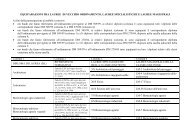
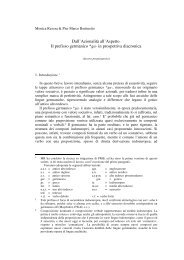
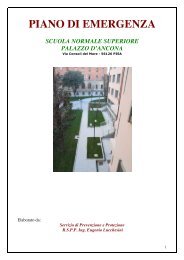
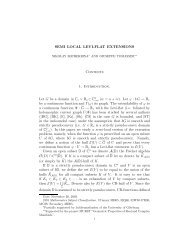
![4. Ghost [Å] vowels in French - Laboratorio di Linguistica](https://img.yumpu.com/49999334/1/184x260/4-ghost-a-vowels-in-french-laboratorio-di-linguistica.jpg?quality=85)


